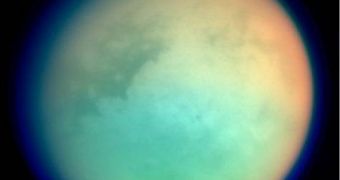Data collected by the Cassini spacecraft shows the presence of heavy negative ions in the upper regions of the second largest moon in the solar system, Saturn's Titan. Launched in 1997, the Cassini spacecraft reached Saturn in 2004; it had several missions, amongst which the study of the surface of Titan, and of its dense atmosphere.
The discovery of these electrically charged ions reveals the existence of organic substances that represent the basic building blocks of more complicated substances. However, the discovery came more like a shock, as the atmospheric composition suggested that these molecules should not have existed, because of the lack of oxygen, nitrogen and methane gas. To be sure the data is accurate, the information received from Cassini has been verified in 16 different countries.
The electron spectroscopy probe, on board the Cassini spacecraft, detected negative ions that have a mass of about 10,000 times that of the hydrogen atom. The forming of additional carbon bonds with these ions can create hydrocarbons of the polycyclic aromatic class, which represent the basic elements of the earliest forms of life found on Earth.
The explanations for their existence involve a process in which the negative ions form in the upper layers of Titan's atmosphere, after which they sink back to a region close to the surface, and probably exist in a form of mist that envelopes the moon. The same mist prevented the previous Voyager missions from closer studying Titan's surface and determined the reasons for the launch of the Cassini spacecraft.
The study of these processes involved in atmospheric chemistry and aerosol formation can provide crucial information on the origin of life on Earth, and in the solar system.
The Cassini spacecraft represents a NASA, ESA and Italian Space Agency collaboration. The spacecraft was designed and built by using two separate modules, the Cassini orbiter and the Huygens probe. Six months after its arrival, the Huygens probe separated from the orbiter and was sent towards Titan, and eventually landed on its surface. The structure and components of the atmosphere resemble that of the early Earth, with high contents of nitrogen and methane. However, the Huygens probe detected very heavy hydrocarbon-base negative ions, at an altitude of 953 kilometers above the surface, a distance that is equivalent to that from London to Milan.

 14 DAY TRIAL //
14 DAY TRIAL //